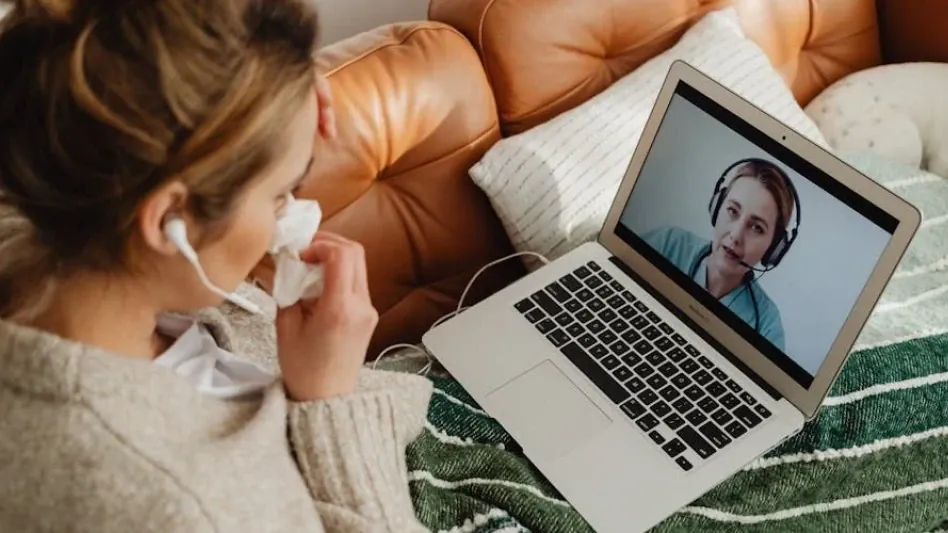The recent legislative and regulatory changes in telehealth have introduced significant updates that impact both healthcare providers and patients. These modifications aim to extend the flexibilities originally introduced during the COVID-19 public health emergency (PHE), ensuring the continued accessibility and efficiency of telehealth services. By delving into the latest extensions and provisions, this article will provide a comprehensive overview of how they shape the current telehealth landscape. The United States Congress has taken a significant step by extending various telehealth flexibilities an additional two years beyond their original expiration date of December 31, 2024. This extension is part of the “Further Continuing Appropriations and Disaster Relief Supplemental Appropriations Act, 2025,” which also encompasses several other critical healthcare measures.
Extended Telehealth Flexibilities
During the COVID-19 public health emergency, the Centers for Medicare & Medicaid Services (CMS) were compelled to implement multiple telehealth waivers to facilitate remote medical services. With the latest legislative changes, the Congressional bill now extends these waivers until December 31, 2026, allowing for continued telehealth innovations and practices. One of the most notable expansions is the definition of “originating site.” Previously, telehealth services were restricted to certain healthcare facilities, but the new bill broadens this to encompass any location within the United States, including a patient’s home. This allows for greater flexibility and accessibility for patients who can now receive telehealth services from the comfort of their homes.
Another significant change lies in the expanded definition of “practitioner.” The term now includes a wider array of healthcare professionals such as qualified occupational therapists, physical therapists, speech-language pathologists, and audiologists. Before the PHE, the definition was limited to a smaller selection of health roles, including physician assistants and nurse practitioners. This broader inclusion means that more patients can access specialized care through telehealth services. Additionally, the bill maintains the authorization that allows Rural Health Clinics (RHCs) and Federally Qualified Health Centers (FQHCs) to provide and be reimbursed for telehealth services. This is a crucial extension, particularly for rural areas where access to healthcare services can be limited.
In-Person Visit Requirement and Audio-Only Telehealth
The bill also addresses significant concerns around the in-person visit requirement for telehealth mental health services and the use of audio-only telehealth. For mental health services, there was initially a requirement for an in-person examination within six months before the initial telehealth service for diagnosis or treatment. The new bill delays this requirement until January 1, 2027, thus providing more flexibility for mental health telehealth services, which have become increasingly important during and after the pandemic.
In addition to this delay, the bill ensures that services furnished using audio-only telecommunications technology remain covered and reimbursable. This is a critical extension as it allows patients who may not have access to video-enabled devices or high-speed internet to continue receiving care. Another significant aspect of the bill is the extension of the permissible use of telehealth for face-to-face encounters required to recertify hospice care eligibility, ensuring these essential services remain accessible. Furthermore, health savings account (HSA)-qualifying high-deductible health plans can continue to cover telehealth services on a pre-deductible basis until January 1, 2027. This safe harbor provision supports the financial feasibility of telehealth services for patients utilizing HSAs.
Additional Provisions in the Bill
Beyond extending telehealth flexibilities, the bill incorporates several additional provisions that aim to refine and improve telehealth services further. One key provision mandates the Secretary of the Department of Health and Human Services (HHS) to establish requirements for using codes or modifiers in telehealth claims that involve specific telehealth virtual platforms or services provided incident to a practitioner’s professional service by January 1, 2026. This move is expected to standardize telehealth billing practices and ensure accurate reimbursement for services rendered. Another crucial provision is the extension of hospital-at-home flexibilities. These flexibilities, which will now extend through 2029, allow hospitals to continue providing acute care at patients’ homes. This extension supports a model of healthcare that many have found beneficial for both patients and providers during the pandemic.
Alongside these advancements, the Department of Health and Human Services will need to ensure these changes are implemented effectively and transparently to avoid any potential confusion or inconsistency in telehealth services provision. Taken together, these provisions reflect an ongoing commitment to refining and improving the telehealth framework to better serve both healthcare providers and patients.
Changes Under the CY 2025 Physician Fee Schedule Final Rule
To maintain certain telehealth flexibilities, the Centers for Medicare & Medicaid Services (CMS) also finalized several key changes within its regulatory purview in the Calendar Year 2025 Physician Fee Schedule Final Rule. A primary change is the extended allowance for “remote direct supervision” of services. Traditionally, direct supervision required the supervising practitioner to be physically present. Now, the definition includes real-time audio and visual telecommunications as a means for the supervising practitioner to be “immediately available.” This adaptation will be in effect until December 31, 2025, and apply permanently to select incident-to services, facilitating more flexibility in providing remote care.
Another important change is the enrolled location as “distant site” address flexibility. Under the new rule, telehealth practitioners can continue billing Medicare from their currently enrolled location, instead of their home address, until December 31, 2025. This concession simplifies administrative processes for telehealth providers and supports the continuity of telehealth services. Additionally, the Final Rule also updates the definition of “telecommunications system” to include audio-only communication for telehealth services under certain conditions. Effective January 1, 2025, this permanent change recognizes the importance of audio-only telehealth options, especially for patients in areas with limited internet access.
Other Provisions of the Final Rule
The bill addresses key issues with the in-person visit requirement for telehealth mental health services and the use of audio-only telehealth. Originally, an in-person examination was required within six months before the initial telehealth service for diagnosis or treatment. However, the new bill postpones this requirement until January 1, 2027, offering more flexibility for telehealth mental health services, vital during and after the pandemic.
Additionally, the bill ensures that services provided via audio-only telecommunications technology remain covered and reimbursable, which is crucial for patients without access to video-capable devices or high-speed internet. A significant part of the bill also extends the use of telehealth for required face-to-face encounters for recertifying hospice care eligibility, maintaining the accessibility of these essential services. Furthermore, high-deductible health plans that qualify for health savings accounts (HSAs) can continue to cover telehealth services on a pre-deductible basis until January 1, 2027. This safe harbor provision supports the financial feasibility of telehealth services for patients using HSAs.









